Medicare Plans in California
The good news is that Californians have a lot of Medicare options to choose from. But sorting through all of those options to find the right coverage can be overwhelming. That’s why we created this guide. We’ve done the research to help you navigate the different Medicare plans available in California so that you can find the right coverage for your needs
Who’s eligible for Medicare Plans in California?
Medicare is a federal health insurance program that provides healthcare benefits to those who qualify by age or disability. Most Californians first become eligible for Medicare once they reach 65 years of age. Certain younger people can also qualify if they have either received Social Security Disability Insurance (SSDI) for at least 24 months or have been diagnosed with Amyotrophic Lateral Sclerosis (ALS) or End-Stage Renal Disease (ESRD).
In order to qualify, you must have been a US citizen or permanent resident for at least 5 years. You or your spouse must also have worked at a job for at least 10 years that paid toward Medicare via Social Security deductions.
We can help you determine your Medicare eligibility or help you prepare for your upcoming eligibility. You can view plans in your area online at by using the form below or speak with a licensed insurance agent by calling the number above.

What are the Medicare Plans in California?
Orginial Medicare Part A & Part B
Original Medicare is the federal component of Medicare, which is split into two parts.
Part A (Hospital Insurance) covers inpatient services, like hospital care, hospice care, and nursing home care (as long as custodial care isn’t the only care needed).
Part B (Medical Insurance) covers outpatient services, like ambulance services and mental health care, and durable medical equipment, like walkers, canes, blood sugar monitors. Part B can also cover some preventive services, like flu shots, cardiovascular screenings, and diabetes screenings. Unlike Part A, you will not be automatically enrolled in Part B when you reach 65. You will need to enroll in Part B if you want it.
It’s important to note that Original Medicare doesn’t cover everything. Services and supplies generally not covered by Original Medicare include:
- Long-term care (custodial care)
- Most outpatient prescription drugs
- Hearing aids
- Eye exams and eyeglasses
- Most dental care and dentures
- Routine foot care
- Cosmetic surgery
- Acupuncture
Original Medicare isn’t designed to cover 100% of your medical bills and Medicare beneficiaries still pay a portion of their healthcare costs through coinsurance, deductibles and copays. However, Medicare beneficiaries in California can choose to enroll in another plan to increase coverage.
Medicare Advantage Plans (Part C)
Medicare Advantage plans, offered by Medicare-approved private insurance companies, work as an alternative to the coverage provided by Original Medicare Parts A and B. These plans provide the same coverage as Original Medicare and can also include additional benefits not covered by Parts A or B, like dental or vision coverage. Medicare Advantage plans can also include prescription drug coverage, which are called Medicare Advantage Prescription Drug (MAPD) plans.
You must be enrolled in both parts of Original Medicare to enroll in a Medicare Advantage plan. If enrolled in a Medicare Advantage plan, you will continue paying your Part B premium in addition to your Part C premium. There are many different types of Medicare Advantage plans available in California, offering varying degrees of coverage.
For more information about Medicare Advantage plans, click here.
Medicare Prescription Drug Plans (Part D)
Medicare Prescription Drug plans, Medicare Part D, are provided and coordinated by private insurance companies contracted with Medicare. Any beneficiary who is eligible for Original Medicare, Part A and/or Part B can sign-up for Medicare Part D if they are a permanent resident of the Medicare Prescription Drug Plan service area. Medicare Prescription Drug coverage is optional, but you might pay a late-enrollment penalty if you enroll later.
Medicare Part D coverage is available through stand-alone Medicare Prescription Drug Plans, which work alongside Original Medicare, or through Medicare Advantage plans that have prescription drug coverage, known as Medicare Advantage Prescription Drug Plans (MAPD). Different insurers offer different types of plans, so your monthly plan premium and out-of-pocket expenses for prescription drugs will vary from plan to plan.
Each medication covered by a Medicare Prescription Drug plan has a set cost in the form of a co-pay or coinsurance according to a tiered system known as a formulary. Every Medicare Prescription Drug plan has a formulary for your reference, showing the cost associated with each covered medication. Reviewing the formularies will allow you to pick the plan with the lowest cost for your prescriptions.
For more information about Medicare Prescription Drug plans, click here.
Medicare Supplement Plans (Medigap)
Medicare Supplement plans help to expand upon Original Medicare (Parts A and B) for a more comprehensive coverage. Medigap plans are offered by Medicare-approved private insurance companies and work in tandem with Original Medicare. These plans can reduce your out-of-pocket expenses by paying for things that Original Medicare doesn’t cover, like deductibles, coinsurance, and copays.
For more information about Medicare Supplement plans, click here.
When Can I Enroll In A Plan?
Medicare Advantage and Medicare Prescription Drug Plans
The first opportunity to enroll in Medicare plans in California is during your Initial Enrollment Period (IEP). Your IEP starts three months before your 65th birthday month, then continues through your birth month and three months after. This means that you have a seven month period in total to enroll.
After this period, you can make changes to your Medicare Advantage or Medicare Prescription Drug coverage during the Annual Election Period (AEP). The AEP runs from October 15th to December 7th every year.
Medicare Initial Enrollment Period

7-Month Initial Enrollment Period | Begins 3 months before the month you turn 65
*Signing up for Parts A and B during months 5,6, and 7 may result in delayed coverage.
KEY FACT: The General Enrollment Period provides you an opportunity to enroll in Original Medicare if you missed your IEP. This period occurs every year from January 1st to March 31st. Then, you’ll have an opportunity to select a Medicare Advantage Plan from April 1st through June 30th.
Additional Medicare Resources in California
California’s Health Insurance Counseling and Advocacy Program (HICAP) provides free, confidential counseling and community education for California Medicare beneficiaries and their representatives.
California’s Medicare Savings Program is available to Medicare beneficiaries whose income falls below a certain level to help pay for Medical expenses, like premiums and deductibles.
Sources: Medicare.gov; www.aging.ca.gov
